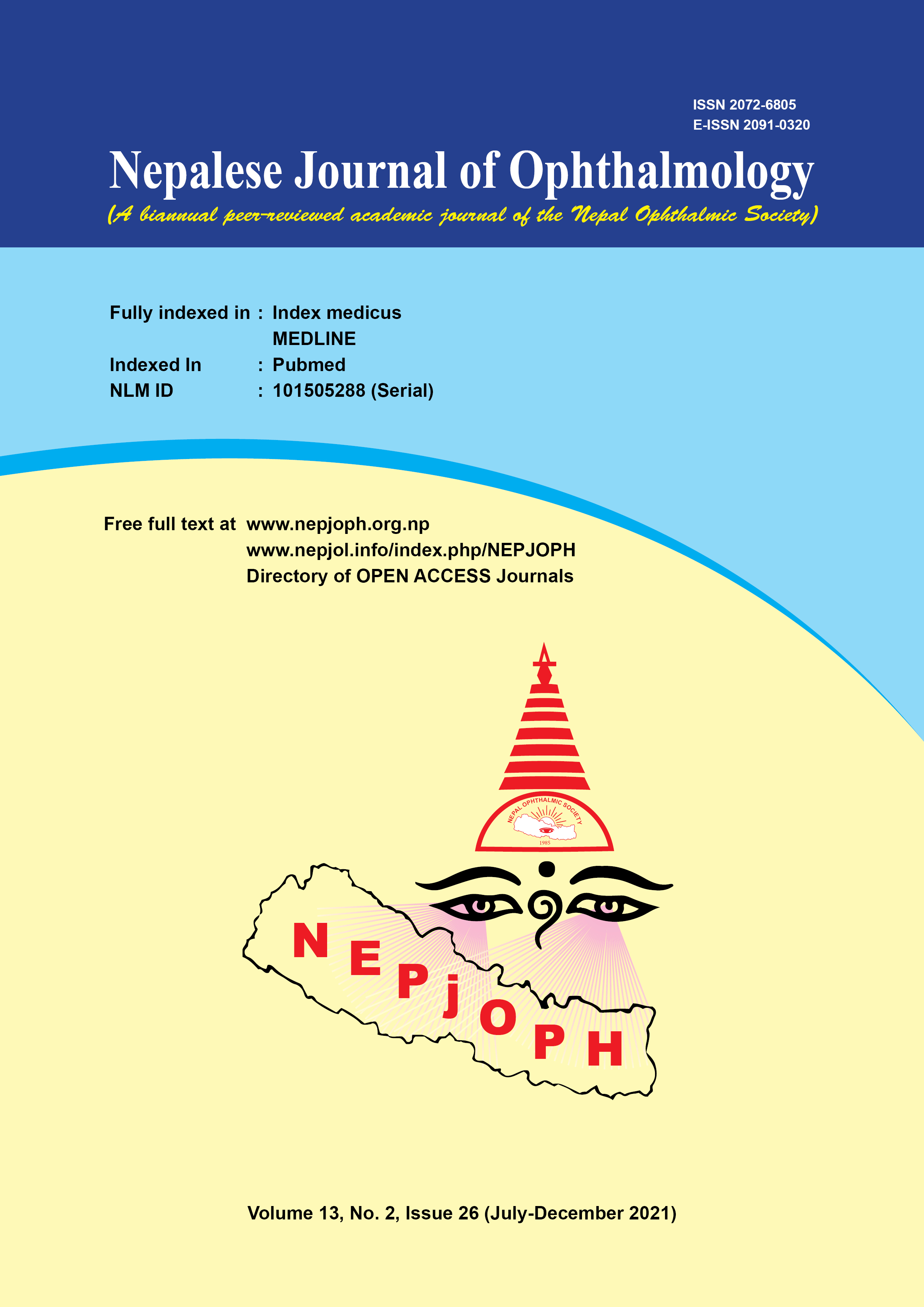Comparison of Ocular Biometry between Primary Open Angle Glaucoma Patients and Normal subjects
DOI:
https://doi.org/10.3126/nepjoph.v13i2.34048Keywords:
Biometry, Primary Open Angle GlaucomaAbstract
Introduction: Glaucoma is one of the major causes of irreversible blindness. In Nepal, the most common type of Glaucoma seen is Primary Open Angle Glaucoma. There are many risk factors associated with Primary Open Angle Glaucoma. The main objective of the study was to compare ocular biometric parameters in patients diagnosed with Primary Open Angle Glaucoma and age matched controls.
Material and methods: This is a hospital based cross sectional study done at Mechi Eye Hospital. The study included 137 cases of Primary Open Angle Glaucoma and 75 normal individuals as control. Axial length (AL), anterior chamber depth (ACD), Keratometry ‘K’ value and Central Corneal Thickness (CCT) were measured. Mann – Whitney U test was used for statistical analysis.
Results: Mean age in Primary Open Angle Glaucoma group was (55.25 ± 10.16 years) and in the control group was (60.96 ± 10.91 years). Axial length in the Primary Open Angle Glaucoma group (23.16 ±1.19 mm) was deeper as compared to the control group (22.69 ±0.89 mm), the difference was statistically significant (p<0.001). Anterior chamber depth (ACD) was statistically deeper in the Primary Open Angle Glaucoma group (3.05 ±0.51 mm) as compared to the control group (2.86 ±0.46 mm), (p<0.01). Central corneal thickness (CCT) was thinner in the Primary Open Angle Glaucoma group (519.5 ±36.25 um) as compared to the control group (525.40 ±37.77 um) but the difference was not found to be statistically significant (p<0.19). K value in Primary Open Angle Glaucoma (7.54 ±0.41mm) was higher than age-matched controls (7.58 ± 0.33mm) but the difference was not statistically significant (p<0.79).
Conclusion: Patients with Primary Open Angle Glaucoma had longer Axial length (AL) and deeper Anterior chamber depth (ACD) as compared to normal individuals.
Downloads
Downloads
Published
How to Cite
Issue
Section
License
Copyright (c) 2021 Nepalese Journal of Ophthalmology

This work is licensed under a Creative Commons Attribution-NonCommercial-NoDerivatives 4.0 International License.
This license enables reusers to copy and distribute the material in any medium or format in unadapted form only, for noncommercial purposes only, and only so long as attribution is given to the creator.




